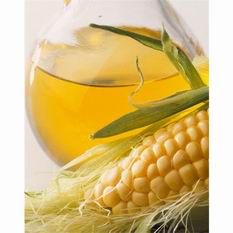- Pretreatment Section of the Oil Mill Plant
- Pressing Section for Oil Mill Plant
- Solvent Extraction Plant
- Oil Refining Plant
- Filling Section of the Oil Mill Plant
- Oil Modification Plant
- Seed Processing Plant
- Small Oil Production Line
- oil press
- YZS-30 Sesame Oil Pressing Machine
- YZS-68 Soya Oil Press
- YZS-80 Canola Oil Press
- YZS-95 Sunflower Seed Oil Press
- YZS-100 Oil Expeller Press
- YZS-120 Oil Pressing Machinery
- YZS-130 Screw Oil Press
- YZS-160 Oil Seed Press
- YZS-80A Combined Oil Press
- YZS-95A Automatic Oil Press Machine
- YZS-100A Automatic Oil Expeller
- Steel Silo
- Face Mask
- Oil Production Process 5S Groundnut
- Physical Refining Process Of The Edible Oil Refining Machine
- Cottonseed Oil Processing Equipment
- Something About Sunflower Oil Extraction Machine
- Something About Soybean Oil Refining Machine
- Something About Edible Oil Solvent Extraction
- Rice Bran Oil Extraction Equipment
- Soybean Oil Refining Equipment
Corn Oil Processing
Corn oil processing is one of the most popular seed processes in oil mill plants. Seed processing plant can be modified specifically as a corn oil plant, peanut oil plant, or sunflower oil plant, etc.
With the help of right oil extraction machinery, corn can be processed into useful products such as corn oil and corn meals.
Corn oil processing
Corn oil processing generally entails the cracking of corn grain that a total oil content from about 3% to 30% by weight and subsequently extracting corn oil from the cracked corn grain. The corn oil is useful for making nutritionally enhanced edible oil or cooking oil, lubricants, biodiesel, fuel, cosmetics and oil-based or oil-containing chemical products. The extracted corn meal is useful for making enhanced animal feed rations, snack food, blended food products, cosmetics, and fermented broth additives.
Corn Oil Plant
The corn oil plant is one of the most popular oil plants used worldwide. Through these procedures, qualified corn oil can be obtained.

• Crude corn oil is filtered and then degummed. In steam degumming, steam is introduced at a volume of not more than 3 percent of the oil and is absorbed by lecithin or other gums, making them heavy enough to be removed by centrifugation. In alkali degumming, a heated sodium hydroxide solution is used to absorb the gums and also neutralize any free fatty acids, followed by "washing" the oil with hot water to remove any soap formed in the process. By-products of the alkali process are sold as soap stock.
• Corn oil is "bleached" with clay that has been "activated" with acid wash to remove any metals native to the clay. As a result, the clay absorbs color pigments, residual soap products and metal ions from the corn oil. The clay is then removed from the oil by filtration. If a partially hydrogenated product, such as margarine or shortening, is being produced at this point in the process, the heated oil is exposed to hydrogen gas under pressure. The oil is refrigerated to crystallize any waxes, which are then removed by filtration. A continuous stream steam treatment deodorizes the oil in a distillation tower, carrying any remaining impurities out the top of the tower with the rising steam as the finished oil is removed from the bottom.


